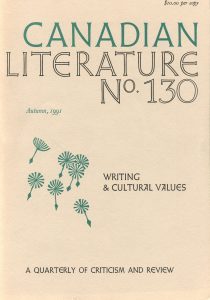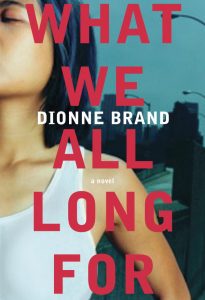Nationalism and Literature: Cross-Genre Connections
In this critical writing assignment, compare and contrast one book and at least one (or even a few) of the following poems (or select from others found in this unit).
Nationalism, Now: Ongoing National Conversations
Contemporary debates about Canadian nationalism in Canadian literature reflect ongoing concerns with power, history, cultural diversity and with their effects on individuals, communities, and the nation state.
Post-nationalism? Regional, National, and Global Connections
Discussing nationalism in terms of globalization troubles and broadens simplistic notions of place. A global perspective focuses on groups with shared interests that form affinity networks beyond national borders, such as global Indigenous movements and international associations that address educational and economic inequalities, human rights violations, and so forth.
What We All Long For by Dionne Brand
Dionne Brand’s 2005 novel What We All Long For explores the experiences of a small group of friends in Toronto and their troubled family histories, in particular touching on how processes and forces of global travel, nationalism, culture, racialization, and economic disparities inform their identities. This set of stories interweave with the story of one lost family member, Quy, who struggles to rejoin his family through an international maze of barriers.
Nationalism, 1980s onwards: Contesting Multiculturalism
Multiculturalism itself is not a settled concept—even though it is legislated in Canada—and it continues to be developed or contested in various ways.
The Jade Peony by Wayson Choy
Wayson Choy’s novel follows a Chinese Canadian family in Vancouver around the time of World War II, through the eyes of the three youngest children. The story draws on the history of Chinese labourers on the railway, the perpetual navigations of and tensions caused by cultural difference, perceptions of Japanese Canadians, and other national and cultural identifications dominant at the time.
Nationalism, 1960s onwards: Multiculturalism
In the 1960s and 70s, the unified vision of a culturally homogeneous nation run by elite white men was fractured by civil rights movements against racial discrimination, the women’s movement, and the Quiet Revolution in Quebec. The Quiet Revolution, which became noisier over time, led to the referendums on sovereignty in 1980 and 1995 because of the division between federalist and sovereignist political factions.
Nationalism, 1950s–1970s: Cultural Nationalism, the Massey Commission, and Thematic Criticism
A form of nationalism particularly relevant to the study of Canadian literature is cultural nationalism, which argues for the support, recognition, and preservation of cultural institutions and products as necessary elements of national identity. This nationalism has sometimes been driven by a desire for self-articulation and sometimes by cultural protectionism.
The Wars by Timothy Findley
The Wars, which won the Governor General’s Award for Fiction in 1977, is an example of what influential Canadian literature critic and theorist Linda Hutcheon terms historiographic metafiction.
Nationalism, late 1800s–1950s: Canadian Immigration and War
In the nineteenth century, Canada created assimilationist legislation for the governance of Aboriginal peoples (see especially the Indian Act of 1876), producing the residential school system among other initiatives that sought to eradicate cultural differences.


















 ©
©